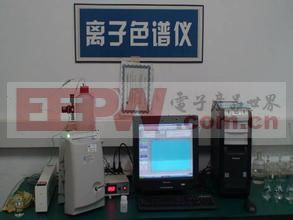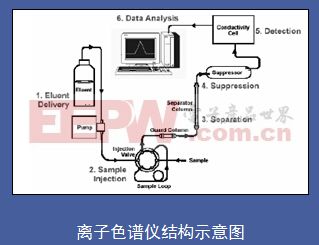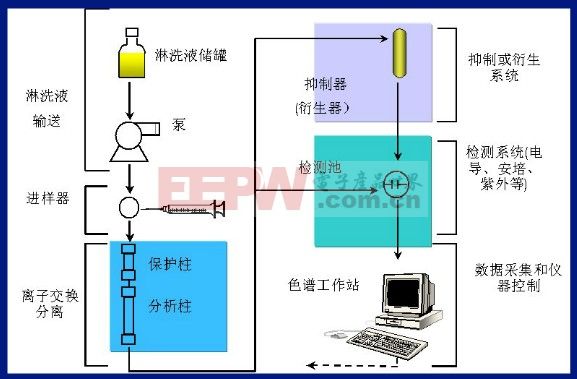1. Principles of Ion Chromatographs - Introduction
Ion chromatography is a type of high-performance liquid chromatography, often referred to as High-Performance Ion Chromatography (HPIC) or modern ion chromatography. Unlike traditional ion exchange chromatography, it uses resins with high crosslinking and low exchange capacity, along with small injection volumes. The eluent is delivered by a plunger pump, enabling on-line, automatic continuous conductance detection of the eluate.
Generally, ion chromatography can be categorized into three main types: ion exchange chromatography, ion exclusion chromatography, and ion-pair chromatography.
1) Ion Exchange Chromatography: This method relies on differences in ionic interactions for separation. It is commonly used for analyzing both organic and inorganic anions and cations.
2) Ion Exclusion Chromatography: Based on Donnan repulsion, this technique uses non-ionic interactions between the solute and the stationary phase. It is particularly effective for separating weak acids, organic acids, alcohols, aldehydes, amino acids, and sugars.
3) Ion-Pair Chromatography: In this approach, the selectivity of separation is mainly governed by the mobile phase. It is widely used for the analysis of surfactant anions and cations, as well as metal complexes.

2. Principle of Ion Chromatography - Composition
An ion chromatograph typically consists of several key components that are assembled based on specific analytical needs. These include the delivery system, injection system, separation system, and detection system. Additional optional components may include an online degasser, autosampler, suppressor system, post-column reaction system, and fully automated control system.
1) Delivery System: Its main function is to deliver the mobile phase through the flow path at a consistent flow rate or pressure.
2) Injection System: This system must be capable of withstanding high pressure, resist corrosion, ensure good repeatability, and be user-friendly.
3) Separation System: The core mechanism involves ion exchange, where ions in the mobile phase interact reversibly with those on the ion exchange resin. The different affinities of the analytes for the resin lead to their separation.
4) Detection System: Common detectors include conductivity detectors, UV-Vis detectors, amperometric detectors, and fluorescence detectors. Additional technologies like chromatography-mass spectrometry may also be used.

3. Ion Chromatograph Principle - How It Works
The separation principle is based on the reversible exchange between dissociable ions on the ion exchange resin and the solute ions of the same charge in the mobile phase. Differences in affinity allow for the separation of hydrophilic anions and cations.
The operation process begins with the infusion pump delivering the mobile phase at a steady flow rate to the analytical system. The sample is introduced via the injector before the column, where it is carried into the column by the mobile phase. As the components move through the column, they separate and reach the detector sequentially.
In suppression-type ion chromatography, a suppressor system is placed before the conductivity detector. A second high-pressure pump delivers the regeneration solution to the suppressor, reducing the background conductivity of the mobile phase. The effluent then enters the conductance detection cell, and the signal is sent to the data system for recording, processing, or storage.
Non-suppression ion chromatography does not use a suppressor or a high-pressure pump for regeneration, making the instrument simpler in design and more cost-effective.

PVC Edge banding,Edge banding materials,PVC Edge banding 22mm,PVC Edge banding for mdf
Shandong Yami Import and Export Co., Ltd. , https://www.yamiwood.com